Trees Birds Mammals Fish Amphibians Reptiles
Wild Algarve
Bookshop
Cantharellus tubaeformis Fr. - Trumpet Chanterelle
Phylum: Basidiomycota - Class: Agaricomycetes - Order: Cantharellales - Family: Cantharellaceae
Distribution - Taxonomic History - Etymology - Identification - Culinary Notes - Reference Sources
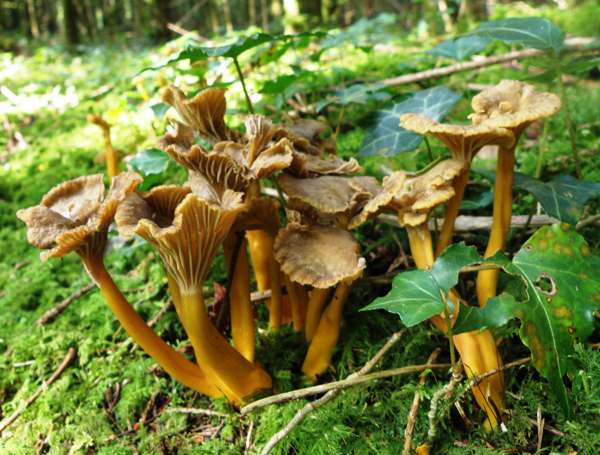
Commonly referred to as the Trumpet Chanterelle, but also known as Yellowlegs, Cantharellus
tubaeformis is a popular edible member of the chanterelle family
found in well-drained coniferous woodland where sunlight penetrates.
Although rather less famous that the lovely golden Chanterelles Cantharellus cibarius that fruit earlier in the season, the Trumpet Chanterelle has one thing going for it: it is extremely gregarious, often appearing (quite literally!) in patches of thousands.
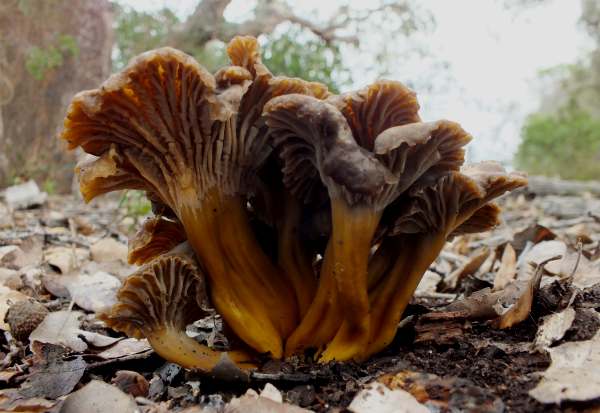
Distribution
Trumpet Chanterelles occur throughout Britain and Ireland, but their distribution is patchy. These swarthy members of the chanterelle clan are particularly common in spruce forests on acidic soil. West Wales, north-west England and Scotland are where Cantharellus tubaeformis fruits in dense colonies - far more abundant than its more famous relative Cantharellus cibarius. On mainland Europe the Trumpet Chanterelle is very common and widespread in Scandinavia, whereas in countries further south you have to head for the hills if you want to find these fine edible fungi.
Once you have found a forest where Cantharellus tubaeformis grows, it is no problem at all to gather enough of these thronging mushrooms for a nice meal. For this reason as well as its subtle flavour and pleasantly firm texture I have included Cantharellus tubaeformis, the Trumpet Chanterelle in my 'Magnificent Seven' mushrooms with super menus in my new book Fascinated by Fungi.
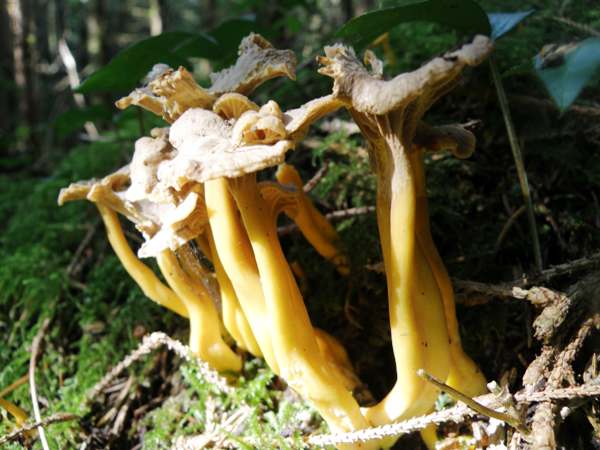
Taxonomic history
Cantharellus tubaeformis, the Trumpet Chanterelle, was named and described by Elias Magnus Fries in 1821. Its common synonyms include Cantharellus infundibuliformis and Craterellus tubaeformis. In Sweden, where this is a very popular late-season mushroom and much gathered for the pot (it makes great soups), it is known as Trattkanterell.
Etymology
The generic name Cantharellus is derived from the Latin word cantharus (originally from the Greek 'kantharos') meaning a drinking vessel (usually with handles), a bowl or a chalice. The Greek noun kantharos was applied to (among other things) an ancient Greek clay vessel which, in turn, was so named for its resemblance to a red-tinged scarab beetle of the same name. See also the Soldier Beetle, Cantharis rustica...
The specific epithet tubaeformis means in the shape of a tube (hollow).
Identification guide
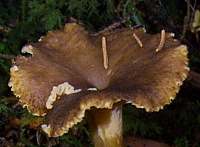 |
Cap
Typically 2 to 5cm across; thin fleshed;
brown above, with a pale margin; veined beneath the cap; funnel-shaped,
with a very wavy margin. |
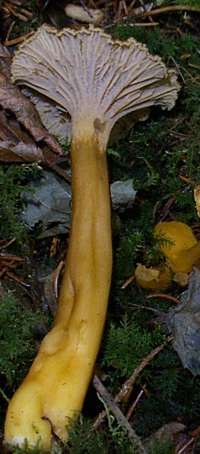 |
Veins
Initially yellow but becoming more greyish as
the fungus matures, the wrinkled veins are forked and decurrent. There are
also cross-veins, as can be seen from this close-up picture.
Stem
Tall, somewhat flattened and hollow. Typically
5 to 10mm in diameter and often slightly club-shaped or bulbous at the
base. |
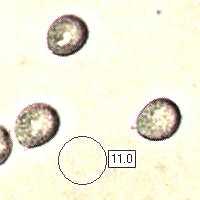 |
Spores
Subglobose or broadly ellipsoidal, smooth, 8-12 x 6-10µm; inamyloid.
Spore print
White or very pale yellow. |
Odour/taste |
Not distinctive. |
Habitat & Ecological role |
In damp coniferous forests, often among ivy. |
Season |
September to November in Britain and Ireland. |
Similar species |
Cantharellus cibarius is bright yellow, usually larger in diameter and more squat; it has a
solid stem, pale flesh and a slight fruity (apricot-like) smell. |
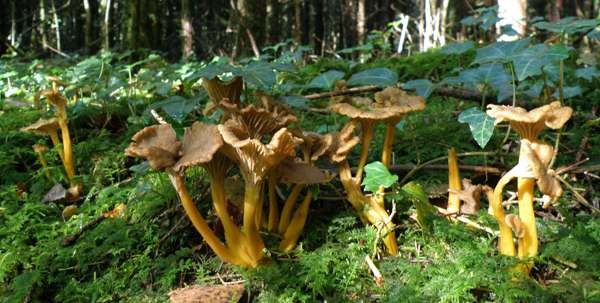
Culinary Notes
Trumpet Chanterelles can be dried (over a radiator or in a warm oven with the door open) and then stored in airtight jars for future use. We also make them into a sauce and then freeze meal-sized portions in (labelled!) polythene bags or plastic boxes. This way we can have a lovely chanterelle sauce with meals through the winter.
Reference Sources
Fascinated by Fungi, 2nd Edition, Pat O'Reilly 2016, reprinted by Coch-y-bonddu Books in 2022.
Funga Nordica: 2nd edition 2012. Edited by Knudsen, H. & Vesterholt, J. ISBN 9788798396130
BMS List of English Names for Fungi
Dictionary of the Fungi; Paul M. Kirk, Paul F. Cannon, David W. Minter and J. A. Stalpers; CABI, 2008
Taxonomic history and synonym information on these pages is drawn from many sources but in particular from the British Mycological Society's GB Checklist of Fungi.
Top of page...
Fascinated by Fungi. Back by popular demand, Pat O'Reilly's best-selling 450-page hardback book is available now. The latest second edition was republished with a sparkling new cover design in September 2022 by Coch-y-Bonddu Books. Full details and copies are available from the publisher's online bookshop...